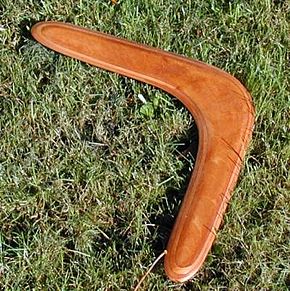
A boomerang is a thrown tool, typically constructed as a flat airfoil, that is designed to spin about an axis perpendicular to the direction of its flight. A returning boomerang is designed to return to the thrower. It is well known as a weapon used by Indigenous Australians for hunting.
Boomerangs have been historically used for hunting, as well as sport, and entertainment. They are commonly thought of as an Australian icon, and come in various shapes and sizes. Despite its association with Australia, the earliest archaeologically attested boomerang weapon comes from Europe, 30,000 years ago.
Contents
Description
A boomerang is traditionally a long wooden device, although historically boomerang-like devices have also been made from bones. Modern boomerangs used for sport are often made from thin aircraft plywood, plastics such as ABS, polypropylene, phenolic paper, or even high-tech materials such as carbon fibre-reinforced plastics. Boomerangs come in many shapes and sizes depending on their geographic or tribal origins and intended function. Many people think of a boomerang as the Australian type, although today there are many types of more easily usable boomerangs, such as the cross-stick, the pinwheel, the tumble-stick, the Boomabird and many other less common types.
An important distinction should be made between returning boomerangs and non-returning boomerangs. Returning boomerangs fly and are examples of the earliest heavier-than-air human-made flight. A returning boomerang has two or more airfoil wings arranged so that the spinning creates unbalanced aerodynamic forces that curve its path so that it travels in an elliptical path and returns to its point of origin when thrown correctly. While a throwing stick can also be shaped overall like a returning boomerang, it is designed to travel as straight as possible so that it can be aimed and thrown with great force to bring down the game. Its surfaces therefore are symmetrical and not uneven like the aerofoils which give the returning boomerang its characteristic curved flight. The boomerang has a range of 160 meters
The most recognisable type of the boomerang is the L-shaped returning boomerang; while non-returning boomerangs, throwing sticks (or shaunies) were used as weapons, returning boomerangs have been used primarily for leisure or recreation. Returning boomerangs were also used to decoy birds of prey, thrown above the long grass to frighten game birds into flight and into waiting nets. Modern returning boomerangs can be of various shapes or sizes.
Historical evidence also points to the use of non-returning boomerangs by the Native Americans of California and Arizona, and inhabitants of southern India for killing birds and rabbits. Indeed, some boomerangs were not thrown at all, but were used in hand to hand combat by Indigenous Australians. Ancient Egyptian examples, however, have been recovered, and experiments have shown that they functioned as returning boomerangs.
Boomerangs can be variously used as hunting weapons, percussive musical instruments, battle clubs, fire-starters, decoys for hunting waterfowl, and as recreational play toys. The smallest boomerang may be less than 10 centimetres (4 in) from tip to tip, and the largest over 180 cm (5.9 ft) in length. Tribal boomerangs may be inscribed and/or painted with designs meaningful to their makers. Most boomerangs seen today are of the tourist or competition sort, and are almost invariably of the returning type.
Etymology
The origin of the term is mostly certain, but many researchers have different theories on how the word entered into the English vocabulary. One source asserts that the term entered the language in 1827, adapted from an extinct Aboriginal language of New South Wales, Australia, but mentions a variant, wo-mur-rang, which it dates to 1798. The boomerang was first encountered by western people at Farm Cove (Port Jackson), Australia, in December 1804, when a weapon was witnessed during a tribal skirmish:
... the white spectators were justly astonished at the dexterity and incredible force with which a bent, edged waddy resembling slightly a Turkish scimytar, was thrown by Bungary, a native distinguished by his remarkable courtesy. The weapon, thrown at 20 or 30 yards distance, twirled round in the air with astonishing velocity, and alighting on the right arm of one of his opponents, actually rebounded to a distance not less than 70 or 80 yards , leaving a horrible contusion behind, and exciting universal admiration.
—?The Sydney Gazette and New South Wales Advertiser, 23 December 1804
David Collins listed "Wo-mur-r?ng" as one of eight aboriginal "Names of clubs" in 1798. A 1790 anonymous manuscript on aboriginal language of New South Wales reported "Boo-mer-rit" as "the Scimiter".
In 1822, it was described in detail and recorded as a "bou-mar-rang" in the language of the Turuwal people (a sub-group of the Darug) of the Georges River near Port Jackson. The Turawal used other words for their hunting sticks but used "boomerang" to refer to a returning throw-stick.
History
Depictions of boomerangs being thrown at animals, such as kangaroos, appear in some of the oldest rock art in the world, the Indigenous Australian rock art of the Kimberly region, which is potentially up to 50,000 years old. Stencils and paintings of boomerangs also appear in the rock art of West Papua, including on Bird's Head Peninsula and Kaimana, likely dating to the Last Glacial Maximum, when lower sea levels led to cultural continuity between Papua and Arnhem Land in Northern Australia. The oldest surviving Australian Aboriginal boomerangs come from a cache found in a peat bog in the Wyrie Swamp of South Australia and date to 10,000 BC.
Though traditionally thought of as Australian, boomerangs have been found also in ancient Europe, Egypt, and North America. Hunting sticks discovered in Europe seem to have formed part of the Stone Age arsenal of weapons. One boomerang that was discovered in Ob?azowa Cave in the Carpathian Mountains in Poland was made of mammoth's tusk and is believed, based on AMS dating of objects found with it, to be about 30,000 years old. In the Netherlands, boomerangs have been found in Vlaardingen and Velsen from the first century BC. King Tutankhamun, the famous Pharaoh of ancient Egypt, who died over 3,300 years ago, owned a collection of boomerangs of both the straight flying (hunting) and returning variety.
No one knows for sure how the returning boomerang was invented, but some modern boomerang makers speculate that it developed from the flattened throwing stick, still used by the Australian Aborigines and other indigenous peoples around the world, including the Navajo in North America. A hunting boomerang is delicately balanced and much harder to make than a returning one. The curving flight characteristic of returning boomerangs was probably first noticed by early hunters trying to "tune" their throwing sticks to fly straight.
Modern use
Today, boomerangs are mostly used for recreation. There are different types of throwing contests: accuracy of return; Aussie round; trick catch; maximum time aloft; fast catch; and endurance (see below). The modern sport boomerang (often referred to as a 'boom' or 'rang') is made of Finnish birch plywood, hardwood, plastic or composite materials and comes in many different shapes and colours. Most sport boomerangs typically weigh less than 100 grams (3.5 oz), with MTA boomerangs (boomerangs used for the maximum-time-aloft event) often under 25 grams (0.9 oz).
Boomerangs have also been suggested as an alternative to clay pigeons in shotgun sports, where the flight of the boomerang better mimics the flight of a bird offering a more challenging target.
The modern boomerang is often computer-aided designed with precision airfoils. The number of "wings" is often more than 2 as more lift is provided by 3 or 4 wings than by 2.[18][19]
In 1992, German astronaut Ulf Merbold performed an experiment aboard Spacelab that established that boomerangs function in zero gravity as they do on Earth. French Astronaut Jean-François Clervoy aboard Mir repeated this in 1997.[20] In 2008, Japanese astronaut Takao Doi again repeated the experiment on board the International Space Station.[21][22]
Hunting
It is thought by some that the shape and elliptical flight path of the returning boomerang makes it useful for hunting birds and small animals, or that noise generated by the movement of the boomerang through the air, or, by a skilled thrower, lightly clipping leaves of a tree whose branches house birds, would help scare the birds towards the thrower. It is further supposed by some that this was used to frighten flocks or groups of birds into nets that were usually strung up between trees or thrown by hidden hunters.[23] In southeastern Australia, it is claimed that boomerangs were made to hover over a flock of ducks; mistaking it for a hawk, the ducks would dive away, toward hunters armed with nets or clubs.[1] Despite these notions and similar claims by a few European writers, there is no independently contemporaneous record of any aboriginal peoples using a returning boomerang as a weapon.
Traditionally, most boomerangs used by aboriginal groups in Australia were 'non-returning'. These weapons, sometimes called "throwsticks" or "kylies", were used for hunting a variety of prey, from kangaroos to parrots; at a range of about 100 metres (330 ft), a 2-kg (4.4 lb) non-returning boomerang could inflict mortal injury to a large animal.[1] A throwstick thrown nearly horizontally may fly in a nearly straight path and could fell a kangaroo on impact to the legs or knees, while the long-necked emu could be killed by a blow to the neck.[citation needed] Hooked non-returning boomerangs, known as "beaked kylies", used in northern Central Australia, have been claimed to kill multiple birds when thrown into a dense flock. It should be noted that throwsticks are used as multi-purpose tools by today's aboriginal peoples, and besides throwing could be wielded as clubs, used for digging, used to start friction fires, and are sonorous when two are struck together.
Design
A returning boomerang is a rotating wing. Though it is not a requirement that the boomerang be in its traditional shape, it is usually flat. A falling boomerang starts spinning, and most then fall in a spiral. When the boomerang is thrown with high spin, a boomerang flies in a curve rather than a straight line. When thrown correctly, a boomerang returns to its starting point.
Returning boomerangs consist of two or more arms, or wings, connected at an angle. Each wing is shaped as an airfoil.
As the wing rotates and the boomerang moves through the air, this creates airflow over the wings and this creates lift on both "wings". However, during one-half of each blade's rotation, it sees a higher airspeed, because the rotation tip-speed and the forward speed add, and when it is in the other half of the rotation, the tip speed subtracts from the forward speed. Thus if thrown nearly upright each blade generates more lift at the top than the bottom.[24]
While it might be expected that this would cause the boomerang to tilt around the axis of travel, because the boomerang has significant angular momentum, gyroscopic effect causes the plane of rotation to tilt about an axis that is 90 degrees to the direction of flight, and this is what curves the flight in such a way that it will tend to return.
Request Movie Now
Watch movie Boomerang online on Amazon
Watch movie Boomerang online
Watch The Movie On Prime
Mastana Full HD Movie Download
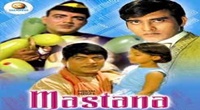
Duet Full HD Movie Download

Harjaee Full HD Movie Download

Rajkumar Full HD Movie Download
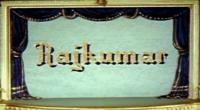
Raajadaani Full HD Movie Download

Poikkal Kudhirai Full HD Movie Download
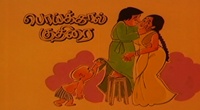
Muduru Full HD Movie Download

Superman Returns Full HD Movie Download

Lal Salam Full HD Movie Download

Bharath Talkies Lo Bombu Full HD Movie Download

Nimisham Full HD Movie Download
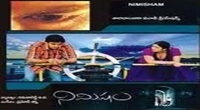
Maarina Manishi Full HD Movie Download

Iddaru Mitrulu Full HD Movie Download

Kula Gothralu Full HD Movie Download

Manmadha Ravulakosam Full HD Movie Download
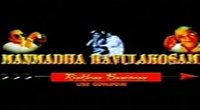
Pakkinti Ammayi Full HD Movie Download

Lakshmi Kataksham Full HD Movie Download

Japanil Kalyanaraman Full HD Movie Download

Geetanjali Full HD Movie Download

Khwab Full HD Movie Download

Bunty Aur Babli Full HD Movie Download


Download latest Movie from bollywood
Request for Download movie Boomerang
- Bollywood movies
- Latest Bollywood movies
- Download all bengali movies
- Download all bhojpuri movies
- Download all english movies
- Download all gujarati movies
- Download all hindi movies
- Download all kannada movies
- Download all malayalam movies
- Download all marathi movies
- Download all oriya movies
- Download all punjabi movies
- Download all tamil movies
- Download all telugu movies
- Bollywood action movies
- Bollywood adventure movies
- Bollywood animation movies
- Bollywood classical movies
- Bollywood comedy movies
- Bollywood crime movies
- Bollywood devotional movies
- Bollywood documentary movies
- Bollywood drama movies
- Bollywood family movies
- Bollywood fantasy movies
- Bollywood historical movies
- Bollywood history movies
- Bollywood horror movies
- Bollywood musical movies
- Bollywood mystery movies
- Bollywood mythological movies
- Bollywood patriotic movies
- Bollywood romance movies
- Bollywood romantic movies
- Bollywood sci-fi movies
- Bollywood social movies
- Bollywood spiritual movies
- Bollywood sports movies
- Bollywood suspense movies
- Bollywood thriller movies
- Bollywood war movies
- Hot actress list
- Hot gujarati actress list
- Hot tamil actress list
- Hot bhojpuri actress list
- Hot assam actress list
- Hot bihari actress list
- Hot jammu and kashmir actress list
- Hot gujarati actress list
- Hot haryana actress list
- Hot konkani actress list
- Hot marathi actress list
- Hot odia actress list
- Hot punjabi actress list
- Hot rajasthani actress list
- Hot kannada actress list
- Hot malayalam actress list
- Hot telugu actress list
- Hot tulu actress list
- Hot Actress list from Indian city
- Hot actress list from ahmedabad
- Hot actress list from alappuzha
- Hot actress list from bangalore
- Hot actress list from bangalore
- Hot actress list from bhopal
- Hot actress list from chandigarh
- Hot actress list from chennai
- Hot actress list from guwahati
- Hot actress list from hyderabad, india
- Hot actress list from indore
- Hot actress list from jaipur
- Hot actress list from kannur
- Hot actress list from kochi
- Hot actress list from kolkata
- Hot actress list from kollam
- Hot actress list from kottayam
- Hot actress list from kozhikode
- Hot actress list from lucknow
- Hot actress list from madurai
- Hot actress list from mangalore
- Hot actress list from mumbai
- Hot actress list from mysore
- Hot actress list from new delhi
- Hot actress list from patna
- Hot actress list from pune
- Hot actress list from thiruvananthapuram
- Hot actress list from thrissur
- Hot actress list from tiruchirappalli
- Hot actress list from vijayawada
- Hot actress list from visakhapatnam
- All Bollywood Movies
- Bollywood Celeb
- >Art Director
- >Audiography
- >Background Music
- >Banner
- >Choreographer
- >Cinematographer
- >Costume Designer
- >Dialogue Writer
- >Director
- >Distributor
- >Editor
- >Executive Producer
- >Hair Stylist
- >Lyricist
- >Music Director
- >Photographer
- >Playback Singers
- >Presenter
- >Producer
- >Production Company
- >Production Designer
- >Screenplay
- >Singer
- >Sound
- >Actor
- >Story Writer
- >Studio
- >Video Director
- >Miscellaneous
- >Publicity (pro)
- >Web Creator
- >Production Labs
- >Publicity Design
- >Publicity Stills
- >Writer
- >Miscellaneous Artists
- >Visual Effects
- >Reporter
- >Music Company
- >Shooting Studios
- >Picturised On
- >Line Producer
- >Co Producer
- >Asst Director
- >Casting Director
- >Cinematography
- >Choreography
- >Dialouge
- >Editing
- >Lyrics
- >Music
- >Story
- >Playback Singer Female
- >Playback Singer Male
- >Actor In A Comic Role (male/female)
- >Child Artiste
- >Ensemble Cast
- >Actor Popular Choice (male)
- >Actor Popular Choice (female)
- >Sa Re Ga Ma Pa Song Of The Year
- >Actor In Supporting Role
- >Actress In Supporting Role
- >Actor In Leading Role
- >Art Direction
- >Actress In Leading Role
- >Sound Recording
- >Costume Design
- >Special Effects
- >Action
- >Actor In A Negative Role
- >Lifetime Achievement Award
- >Cinematic Exellence (director)
- >Cinematic Exellence (male)
- >Cinematic Exellence (female)
- >International Male Icon
- >International Female Icon
- >Actor In A Supporting Role (male)
- >Actor In A Supporting Role (female)
- >Actor In A Comic Role
- >Playback Singer (male)
- >Playback Singer (female)
- >Most Promising Debut (female)
- >Most Promising Debut (male)
- >Most Promising Director
- >Sound Design
- >Lifetime Jodi
- >Marketed Film
- >Jury Award For Best Actor
- >Jury Award For Best Actress
- >Jury Award For Best Film
- >Jury Award For Best Director
- >Playback Singer(male)
- >Lifetime Acheivement Award (male)
- >Excellence Award
- >Jodi Award
- >Performer Of The Year
- >Presented By